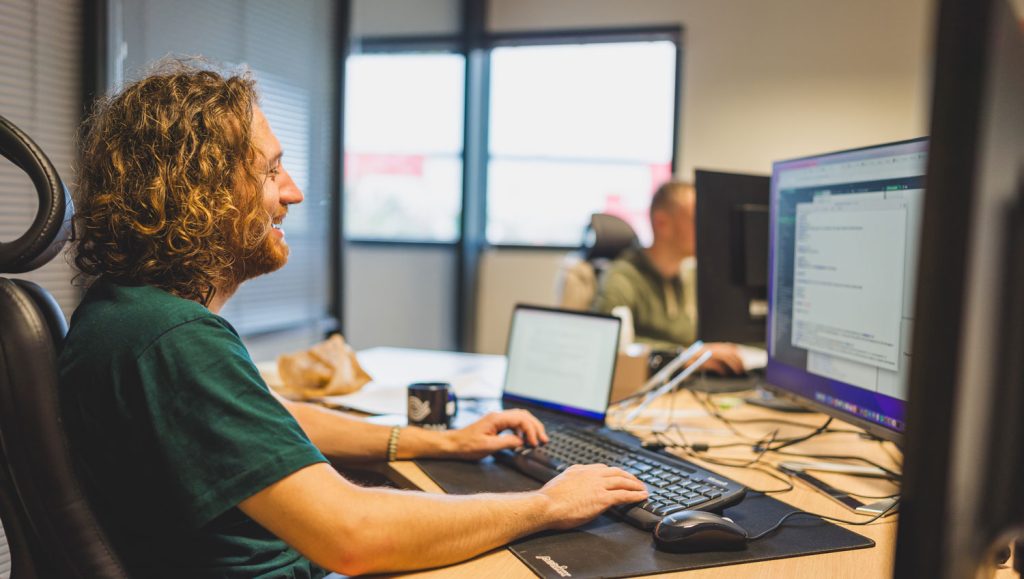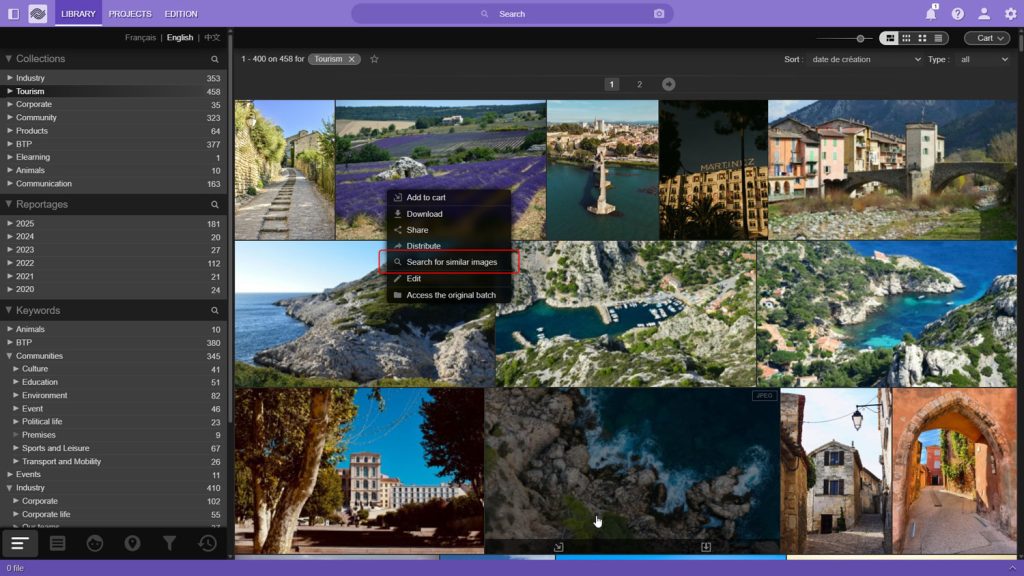Similar image search, the revival of a key feature
Today, thanks to DAMIA Lab and advances in AI, this function has been completely revamped in the solution, paving the way for a smarter DAM for documentation professionals.

A bit of background
DAMIA Lab is the first ANR Labcom dedicated to specific issues in digital asset management. Thanks to the combined knowledge of researchers at the University of Poitiers and the expertise of Einden, the first results of a four-year programme are beginning to be rolled out in Ephoto Dam. All this has been achieved without the involvement of GAFAM, thereby addressing our clients’ key sovereignty concerns.
Previously (already without GAFAM), the search for similar images allowed users to:
- ask Ephoto Dam to search for an image based on a third-party image (outside Ephoto Dam)
- search for an image similar to one already in the DAM.
- It is therefore a graphic, non-semantic search that focuses on the degree of similarity between the content represented by different images.
In terms of technology in particular, this feature could reach its limits with a digital asset base that was too large or images that were too complex to match due to their atypical content.
The revamped similar image search, the first feature to come out of the lab, was integrated into Ephoto Dam on 23 September 2025 as part of the digital asset management solution.
Results that measure up to the challenges
In addition to a technological change that will last for several years to come, Einden has deployed an entire AI-dedicated infrastructure in France. In this respect, this feature is already the first step in a series of major changes for the DAM solution, which aims to bring the added value of AI to documentation professionals in a fair and measured way.
The results of similar image searches, whether by third-party image or based on an image in the DAM, offer unprecedented levels of quality while maintaining high performance in search speed.
Deduplication also benefits from this new technology, providing better service quality for a feature that is essential to maintaining a DAM solution.

First step towards the future of DAM solutions
There are many business issues surrounding the use of a Digital Asset Management solution. For some of them, AI can help us find answers. Here too, this initial deployment is a first step towards topics already in R&D within the laboratory and which may ultimately be deployed in Ephoto Dam.
For example, despite a fairly clear definition, the concept of a duplicate can differ from one organisation to another:
- Does a difference in colourimetry caused by a different scanner justify two pieces of digital content not being duplicates, even though they represent the same content?
- Should a series of portraits taken in quick succession to ensure that the person depicted looks their best be flagged as duplicates?
- Should a photo cropped to a very small percentage of its original size be detected as a duplicate of the original or not? At what percentage?
Thanks to this new technology, the modularity of this detection is now opening up to meet everyone’s specific needs. Moreover, as these needs may vary depending on the nature of the image, modularity can now be considered for each detection. A solution may therefore be offered in the future directly in Ephoto Dam for this purpose.
Another example of a recurring problem is finding content in an image that also exists in the DAM and is represented by its own photo. For example, a work of art that has been photographed and can be found in another image that shows several works. Here too, solutions are on the way for the future of Ephoto Dam.
Thanks to AI, these new fields of research and solutions to concrete problems are now opening up in Ephoto Dam. With full control over all technologies, no exchange with GAFAM, and hosting entirely managed in France, Ephoto Dam is shaping the future of DAM.


